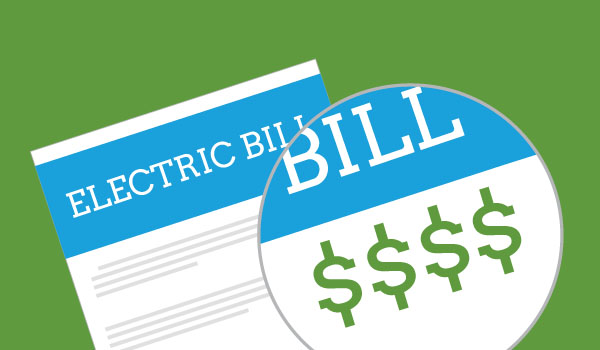Cut Home Utility Expenses

Home utilities
One part of home ownership is the cost of utilities. When working with home buyers, their concern often focuses on the mortgage amount and property taxes. What is important as well are the utilities and maintenance costs. Where my office is in Montgomery County MD, there is a requirement of home sellers to provide the utilities costs for the prior twelve months. Other areas may have similar requirements. This is very helpful to potential buyers as some homes have very high energy consumption and can be a shock after moving in. Product innovations, newer building standards or techniques, changes in habits, all have helped to reduce energy usage.
Despite improvements in efficiency, most homes still waste a lot of energy. There are things one can do to reduce your home’s energy use that are low or no-cost.
Seal the ductwork
While new building codes have ensured that recently constructed home ductwork is properly sealed, many older homes suffer from leaky ducts that add to the home’s heating and cooling bills. Check in accessible areas of the home, such as the basement, crawl space, or attic to inspect the ductwork for gaps and holes. Seal them with flexible mastic or foil tape. Also check the connections at the wall or floor registers. Here is a helpful video: Duct sealing
Check the fireplace
There is nothing better than a roaring fire on a cold night, but otherwise the fireplace may be costing you in lost energy. Once the fire if fully out, close the damper and ensure it is properly seated. Even closed they can leak air. If you don’t use the fireplace on a regular basis then consider a chimney balloon; basically an inflatable device that fills the area around the damper and does a great job of stopping air leaks.
Change the bulbs
These days there are so many options when choosing light bulbs for your home. Many unique styles, sizes, and colors are now available that were unheard of a decade ago. It is said that changing the lights in a typical home, from the old standard incandescent type to the newer efficient LED or CFL lights, can save 35% on the annual lighting costs. When you realize how many light bulbs a typical home has, it is clear that the savings can quickly add up when switching to LEDs or CFLs. While some of the new bulbs are more expensive, there are often local municipality incentives that bring the cost down.
Kick the extra fridge
It is not a surprise how many homes have an extra fridge or freezer in the basement or garage. It certainly can add convenience when stocking up on special deals, or when planning for visitors or entertaining. Many times those extra fridges are older, the ones that may not be very efficient. Carefully consider if there is really a need for more than one, and if used only occasionally then turn it on only when needed.
Check your HVAC filters
All HVAC systems have recommended service terms, and the one item that homeowners can do themselves is to replace the filters. These filters capture dust and particles that flow through the system, both improving the interior air quality of the home and protecting the HVAC components. A clogged filter limits the air flow and makes the system run harder and longer, using more energy than necessary. Buy a year or two’s supply of filters to keep on hand, and place a chart on your HVAC as a reminder of when to change; otherwise it is very easy to forget.
Pull the plugs
In the modern home there are so many implements that are plugged in, with numerous TVs, computers, chargers, exercise machines, and small appliances. So many of these things draw energy even when not in use. A fun experiment is to go around your home and count up how many things are plugged in – you may be surprised. There are some steps to save
- Yank the cords on rarely used items
- Check the settings to see if there are low-power standby options
- Purchase ‘smart’ power strips that automatically cut off juice after a time lapse
Ouch – too hot water
Most home water heaters are from 40 to 60 gallons. Now imagine having that size pot on your stove and keeping the temperature at 120 to 140 degrees or more. That would take an enormous amount of energy. A nice hot shower lasts maybe 15 minutes, but that water heater temperature is maintained 24 hours a day. Of course, water heaters are well insulated, but they are still one of the highest energy consumers in the home. In addition, there are safety issues when the temperature is too high, particularly for children and seniors. The Consumer Protection Safety Commission has good information on this: Tap Water Scalds Lowering the temperature setting is often easy so check your service manual, and start the savings immediately.
Conclusion
Having a place to call home is very special. With it comes the desire not to spend any more than necessary to keep comfortable and enjoy the benefits. Utility usage is one area in which an owner or occupant can make a difference without much expense or time.
Get In Touch
Call Us 301-294-3000 or Email us
Schedule a free online consultation.
